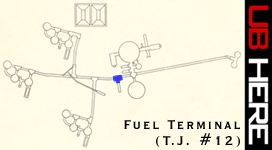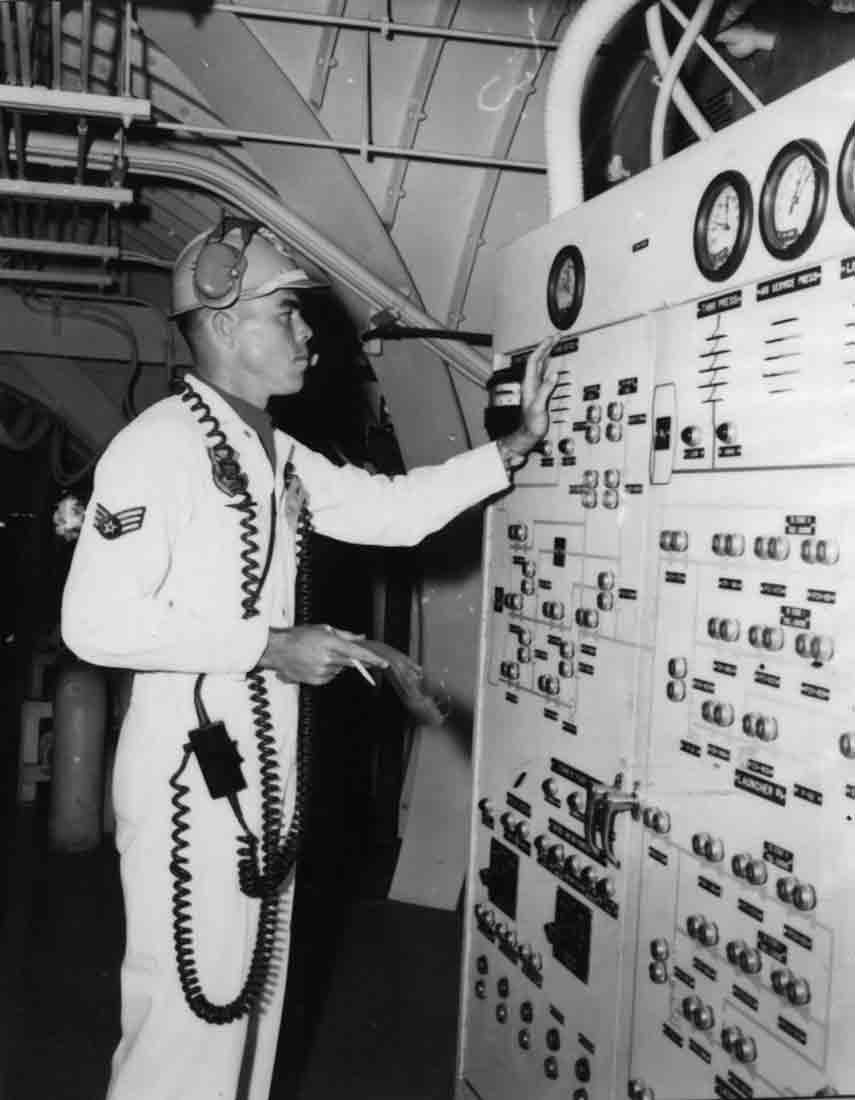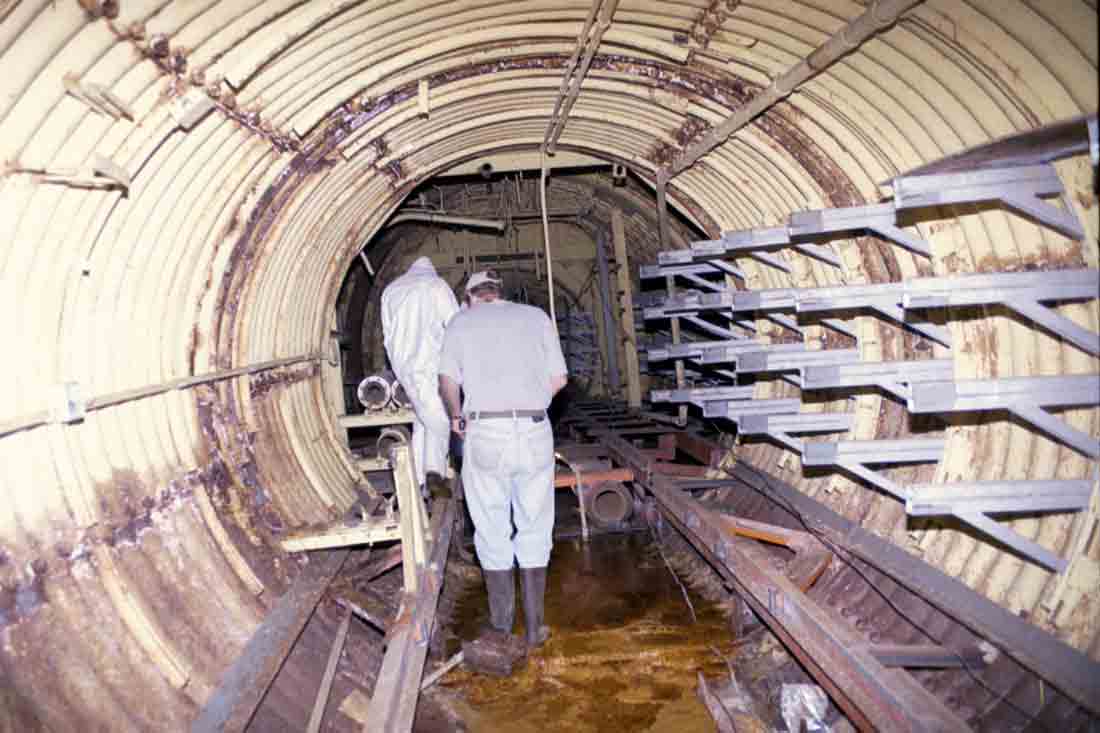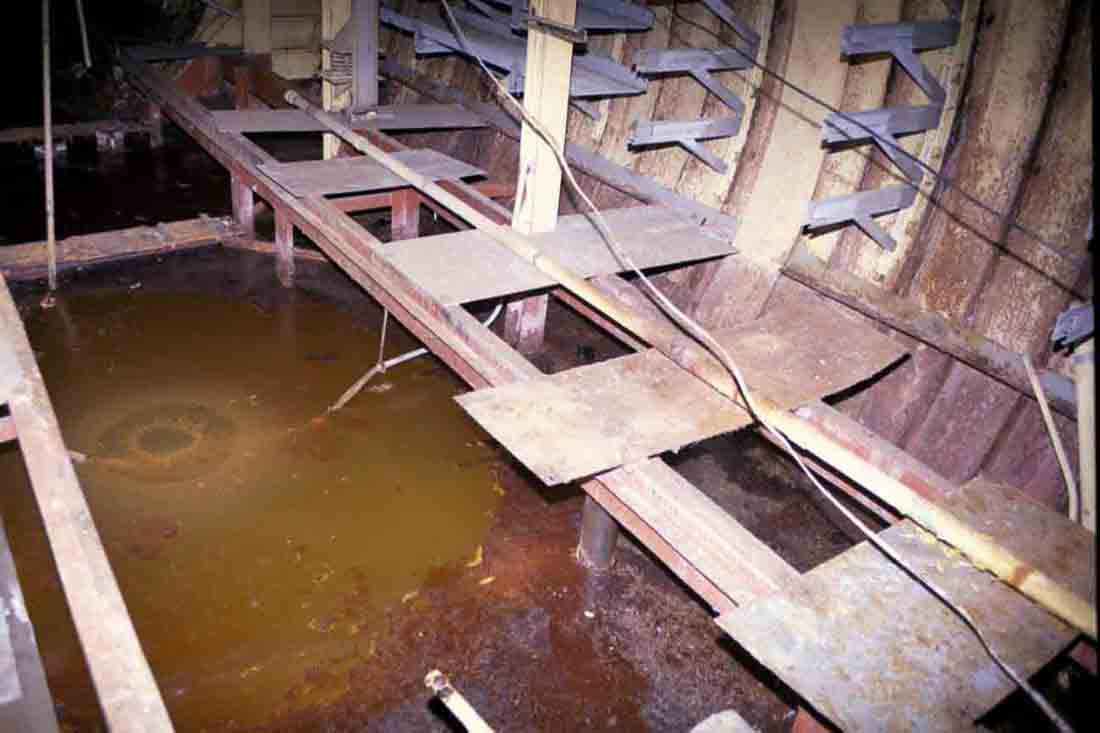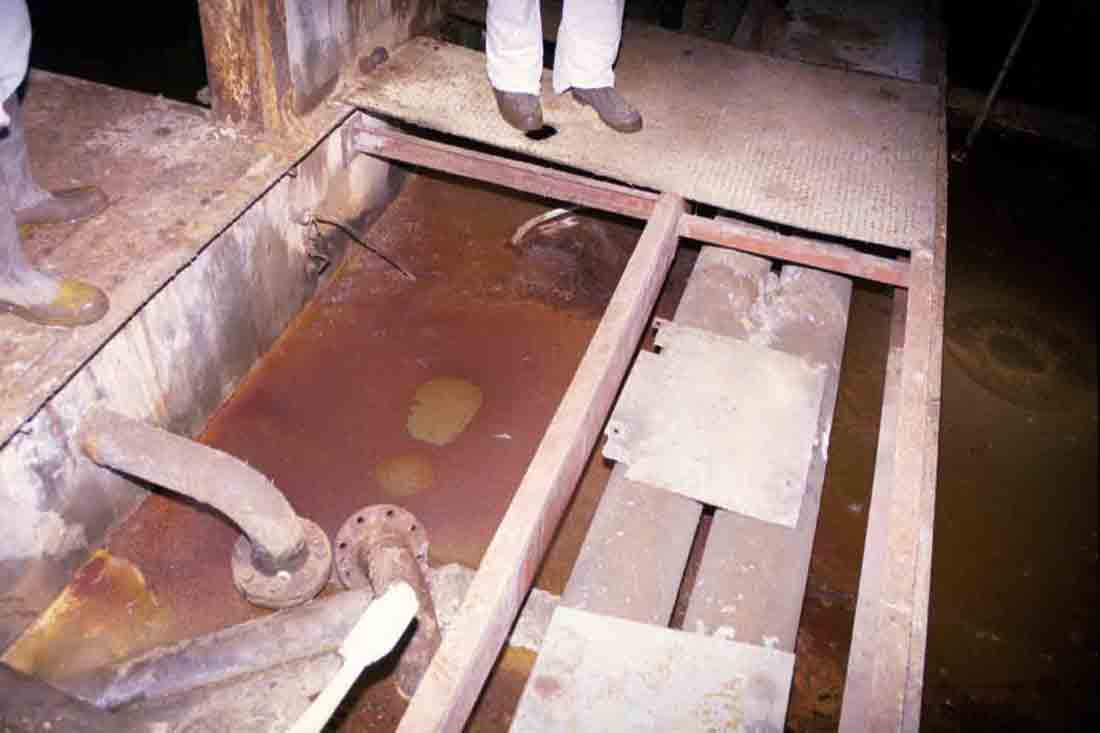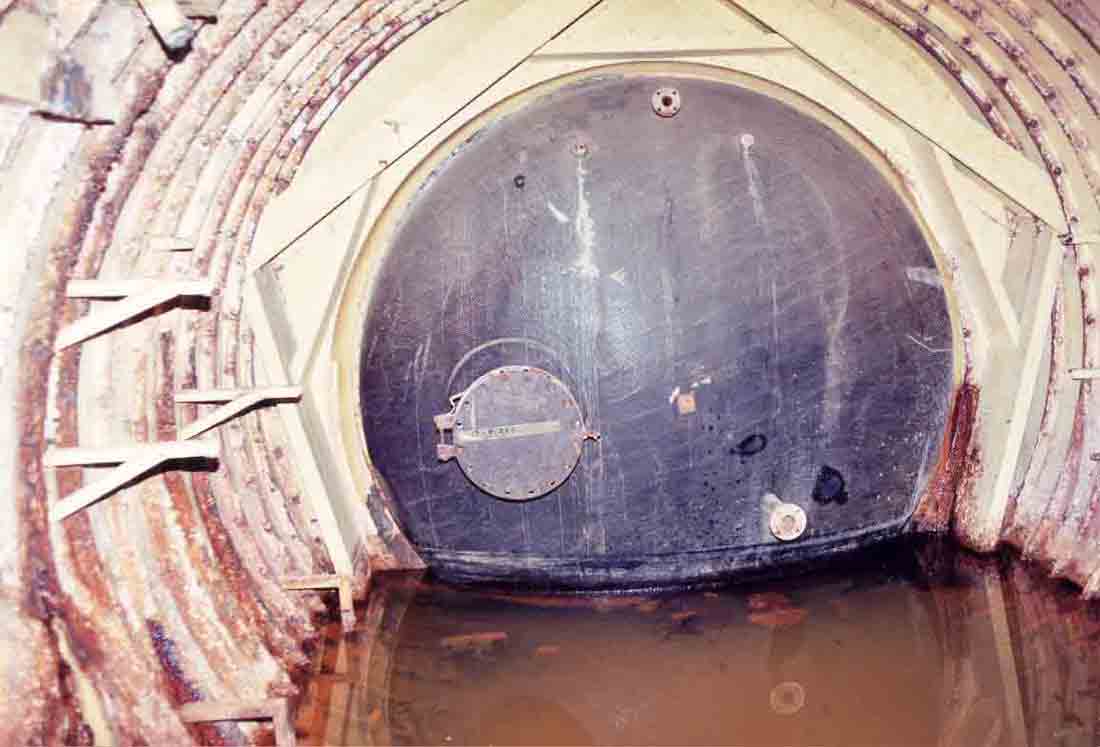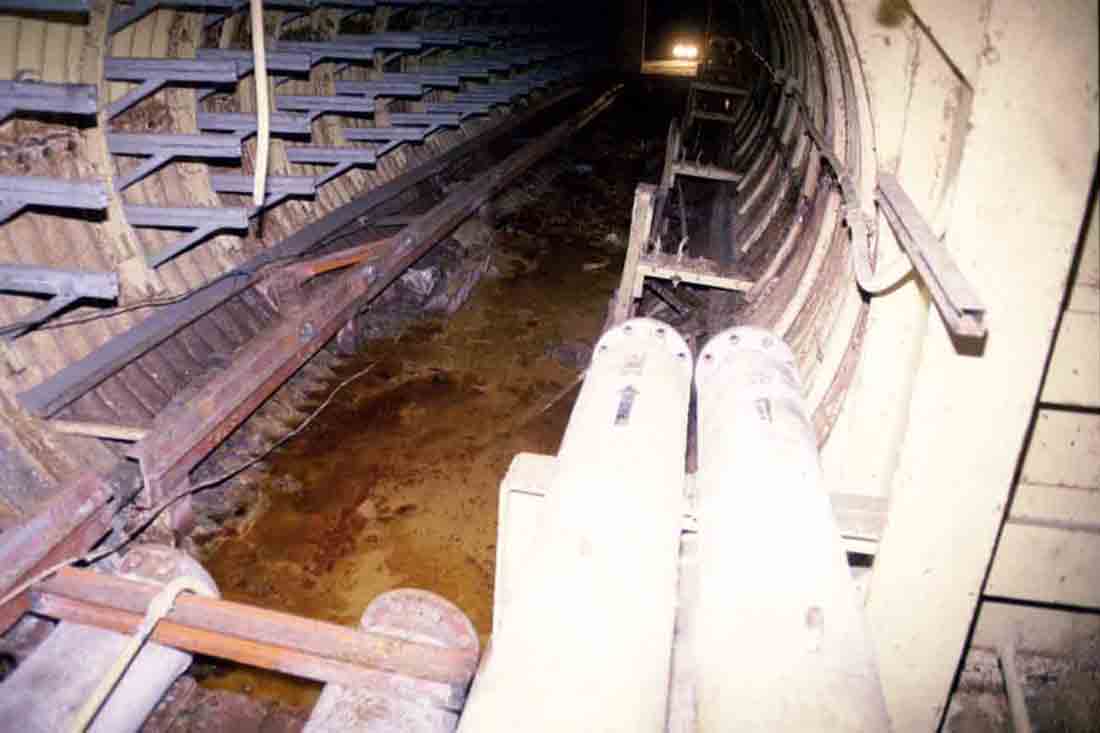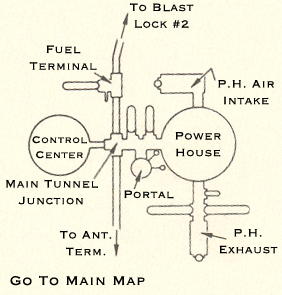When
on alert, fuel is stored inside the Titan missiles to facilitate a
faster launch. This has the added benefit of removing the chance
of any failures that might prevent fueling to complete properly and
helps simplify the already lengthily launch checklist. The Titan I
airframe is essentially a series of self-supporting propellant and
oxidizer tanks strapped together and comprising 2 stages. The
self-supporting structure that allows the airframe to be void of
propellant and oxidizer is in direct contrast to the early Atlas
missiles that, in order to lend structural integrity to the airframe
required the tanks to be pressurized. The reason for this was that
in order to
reduce weight the Atlas missiles were constructed of very thin sheet metal about
the thickness of a dime; without being pressurized and/or filled with
fuel or propellant they could (and sometimes did) collapse like
a punctured rubber raft. (link from:
www.siloworld.com,
copyright Gary Baker. Excellent site. Go visit!)
If
the fuel should be off-loaded from the missile, it is piped here into the
RP-1 tank in the fuel terminal. RP-1, short for "Rocket
Propellant 1", is basically kerosene which has been highly
refined. Since the Titan I is a 2 stage rocket there are 2 fuel
tanks, one for each stage.
Since
the trajectory of an ICBM passes out of the atmosphere, it cannot rely
on oxygen in the surrounding environment to facilitate oxidation of it's
RP-1 fuel. Of course the presence atmospheric oxygen is of little
use since the atmosphere typically contains only 20% oxygen. The
air is neither pure enough or concentrated enough to provide the massive
thrust needed to launch a missile weighing in excess of 200,000
pounds. Furthermore, oxygen could never be supplied from the air
to the rocket motors fast enough to oxidize the huge amount of RP-1 at
the desired rate to produce the thrust required.
As a result, missiles of this sort must bring their own
oxidizer along just to burn the propellant. Without a huge
quantity of oxidizer the
missiles would fizzle out at a certain altitude and never rain down on
Moscow, instead perhaps crashing rather rudely somewhere well short of
the desired target. Most embarrassing.
The
oxidizer used by the Titan I is liquid oxygen (aka: LOX) and of
course each stage of the Titan must have a separate tank of LOX as well
as fuel. Stage I held approximately 7750 gallons of RP-1 and
12,400 gallons of LOX; stage II held approximately 2027 gallons of RP-1
and 2985 gallons of LOX. All totaled that's 25,162 gallons of fuel
and oxidizer. That makes for some serious weight, particularly
when it needs to be accelerated to escape velocity (>7 miles/sec.)
and the total weight at launch is 201,500 lbs. Nearly all the
energy used in a launch was simply to move the missile, and more
specifically, its fuel and propellants to apogee so it could drop the (comparatively
small) payload on it's unwilling recipients.
Owing
to the fact that it takes a huge amount of energy to move this
relatively small re-entry vehicle, I'm reminded of something my dear Grandfather used to say when he saw a bicyclist pedaling hard:
"He sure is moving his legs to give his butt a ride."
As
you might imagine, footing gets rather dicey in this area. Those
with inner ear problems are discouraged from here on out.
This
junction is fairly typical having an inner diameter of 16 feet, which
provides the low areas which you can see are flooded here as are most in
the complex.

